Two decades of monitoring
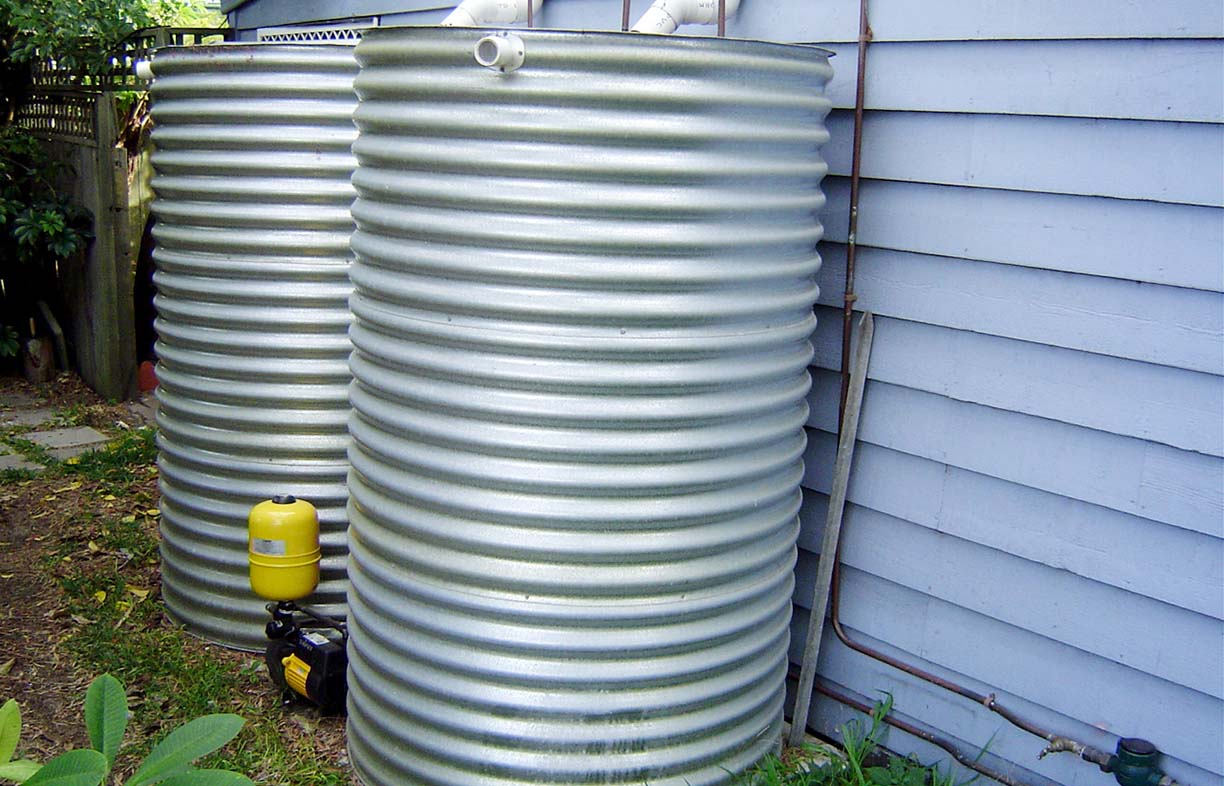
Detailed data collection can make for some interesting discoveries about how water and energy systems behave. Peter Coombes describes the results of almost 20 years of monitoring his house.
Over the last two decades, our household has incrementally installed sustainable measures including rainwater harvesting, water-efficient appliances, a rain garden, solar panels and battery storage at our small two-bedroom cottage and office in the inner city suburb of Carrington in Newcastle. Our system operates by sourcing rainwater and solar energy first, with backup from the grid. We have monitored the house for climate, energy, water, stormwater runoff, costs, human behaviour and maintenance issues since 1997.
A timeline of actions
We purchased and moved into the house in 1997. We installed a dual water supply system (rainwater and mains water) and a water-efficient washing machine in October 2003.
The $2350 rainwater harvesting system included two 2200 L rainwater tanks with backup from mains water supplies via trickle top-up to a minimum water level. The trickle top-up arrangement was created to overcome our water utility’s resistance to dual water supplies.
Figure 1 shows the configuration. The house was plumbed purely to the tank supply. If the volume of water in the rainwater tanks fell below 720 L, mains water was used to top up the tanks to this level.
We created a kitchen garden in January 2004, watered by overflows from the rainwater tank and via permeable surfaces in our backyard, reducing runoff to the street from rain events.
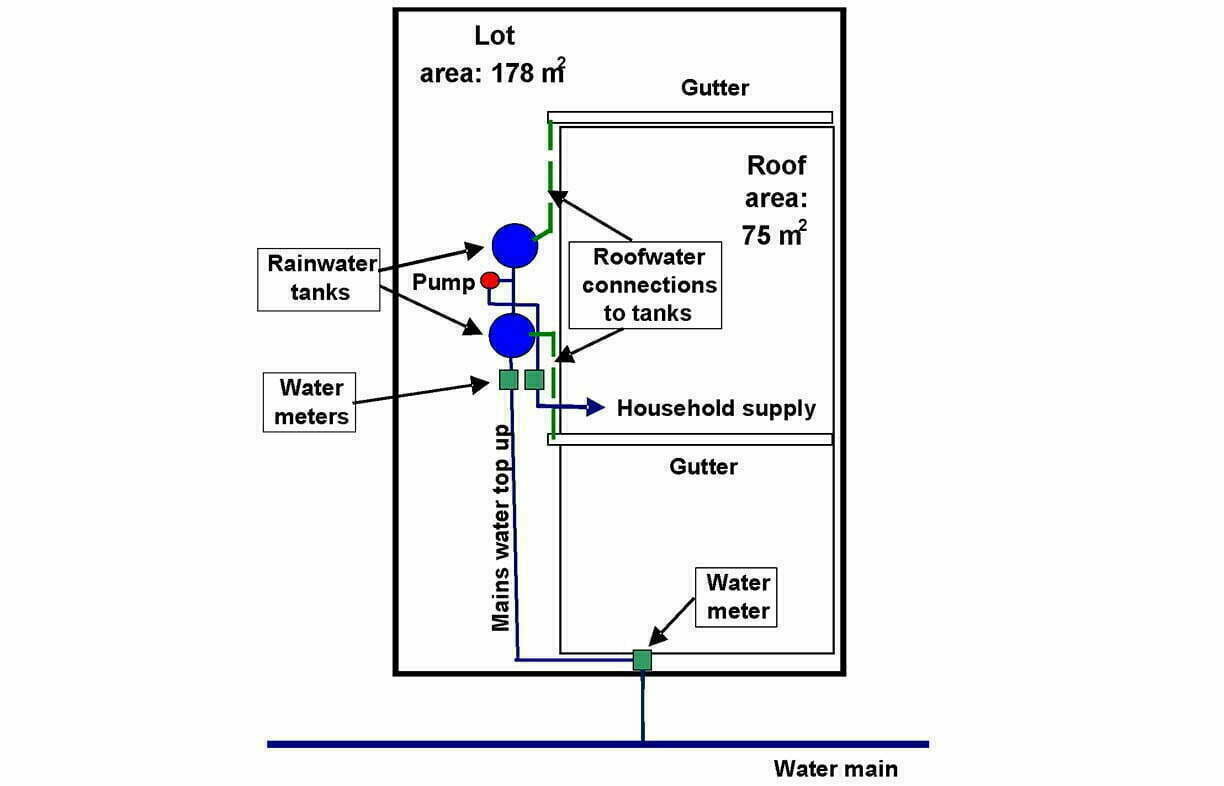
From 2008 to 2011 we rented the property out to tenants, and there were short periods where the house was not occupied. We returned to the house during 2012 and replaced the existing two tanks with a 5000 L Tankworks slimline aquaplate tank with a submersible (in-tank) pump, a 30-micron filter to remove sediments at the pump intake and a mains water pressure bypass arrangement. With installation on a concrete slab, the tank, pump and filters cost $5940.
We installed eight solar panels (1.5 kW) and an inverter at the same time. We also began analysing our water observations at one-minute intervals rather than just the daily summation of results. This analysis quickly showed its worth: the data collected during the nights and when we were absent revealed a constant water use when there should be none, leading us to identify leaks in a toilet cistern and an outdoor tap. We replaced the toilet with a new 4.5/3-litre flush toilet and changed the outdoor tap.
We also installed an under-sink filter (0.1-micron activated carbon filter) on the drinking water tap to remove any residual contaminants. We implemented water quality monitoring—microbial (which tests for bacteria and similar nasties), physical (which tests for physical properties such as turbidity) and elemental (which tests for dissolved elements such as calcium, chlorine, magnesium etc)—which demonstrated acceptable rainwater quality at the household taps.[1]
During 2013 and 2014 we rented the property out again, and returned to the house in 2015. A review of the smart water meter data revealed that mains water was being chosen first in the pressure bypass arrangement. The system only selected rainwater after two litres of water use and if water flow rates were greater than two litres per minute. Thus, toilet flushing, the clothes washer and taps with mostly low volume or low flow rate used a high proportion of mains water regardless of availability of rainwater.
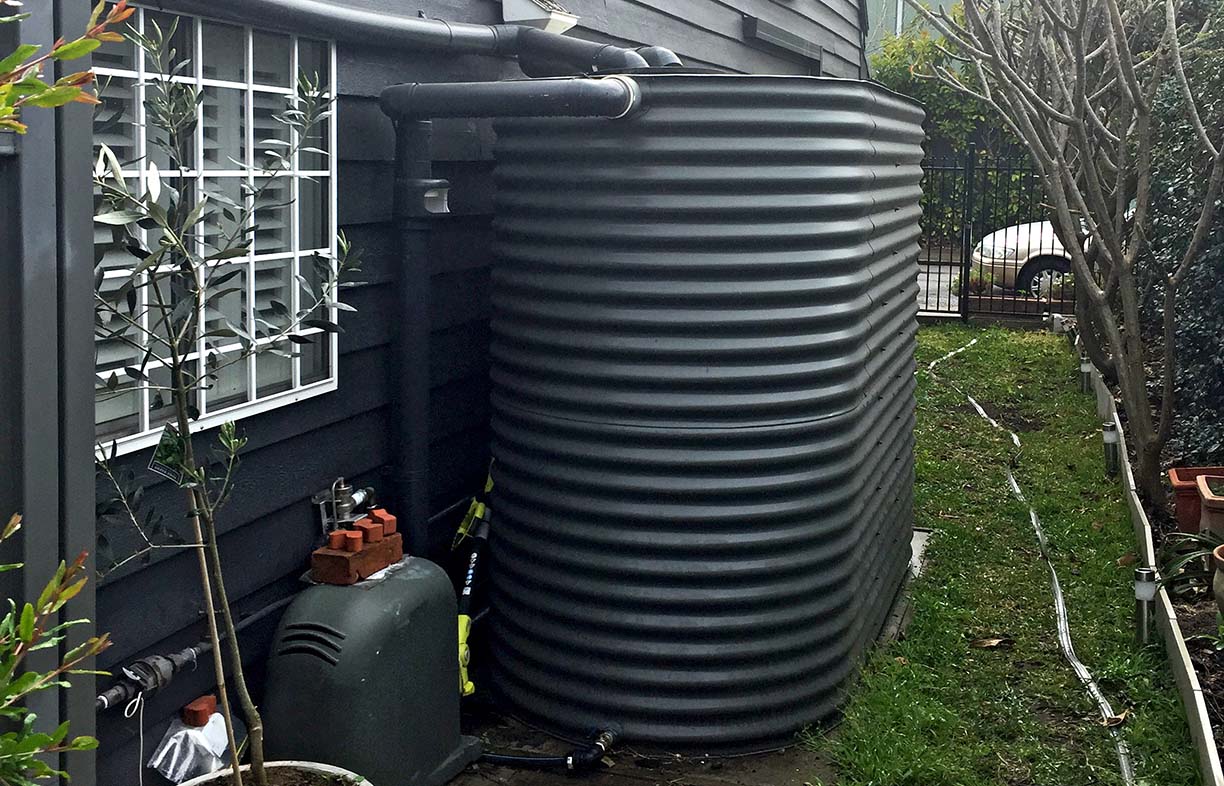
This explained the reduced rainwater use during this period of higher rainfall. It had also led to greater volumes of overflows from the rainwater tank and ponding in the garden, so we employed a plumber to pipe the rainwater overflows to the street.
As part of a renovation in February and March 2017, we decided to improve the mains water bypass system. To ensure that rainwater rather than mains water was sourced first, we replaced the submersible pump and pressure bypass system with a variable-speed external Claytech pump and Beltrami AcquaSaver hydraulic bypass system, which makes sure rainwater is used if available, regardless of flow rate and quantity of water required. This also eliminated the standby energy use of the pressure bypass system; instead, the water pressure from the pump keeps the mains water valve closed, so no electronics or electrically operated valves are used.
We also installed a 7.5 kWh BYD solar battery and eight additional solar panels (2 kW) with Enphase microinverters to maximise generation of solar energy during periods of partial shade from surrounding buildings. The energy storage system was configured to supply the house during grid outages.
Monitoring program
Our system monitoring evolved over time, beginning in 1997 with examination of utility bills for water and electricity use. In 2000, we started taking daily manual readings of water and energy meters and in 2002 we installed smart water meters (yielding measurements at one-minute intervals) at the mains water connection, at the rainwater supply and at the mains water bypass to the house.
This meant we could monitor mains water used, total water pumped from the tank (rain and mains top-up) and the amount of mains water used for tank top-up. We augmented this by recording our water and energy use behaviours. We also measured rainfall, temperature, wind speed and wind direction using a local weather station.
In addition, we measured water levels in the rainwater tanks using a pressure sensor: the sensor is placed below the lowest expected water level near the bottom of the tank and, as the tank fills, the pressure on the sensor increases so that the pressure recorded is proportional to the tank level.
In 2017 we installed smart energy meters to monitor electricity demand in eight different household circuits. We also logged (at five-minute intervals) the energy balance at the BYD battery storage (solar energy in, grid energy in, battery storage, household energy supply and export of solar energy to the grid). The generation of solar energy from the solar panels was also recorded using the Enphase system.
Water use
Figure 2 shows the large reduction in the use of mains water after installing the first rainwater harvesting system and water-efficient appliances in 2003. Variation in mains water use after 2003 was driven by rainfall, changes in behaviour of residents (including us) and our additions to the household water system. The average mains water use was 520 L/day prior to 2003 and 140 L/day after 2012, a 74% annual reduction in mains water use for an annual average saving of 139 kL.
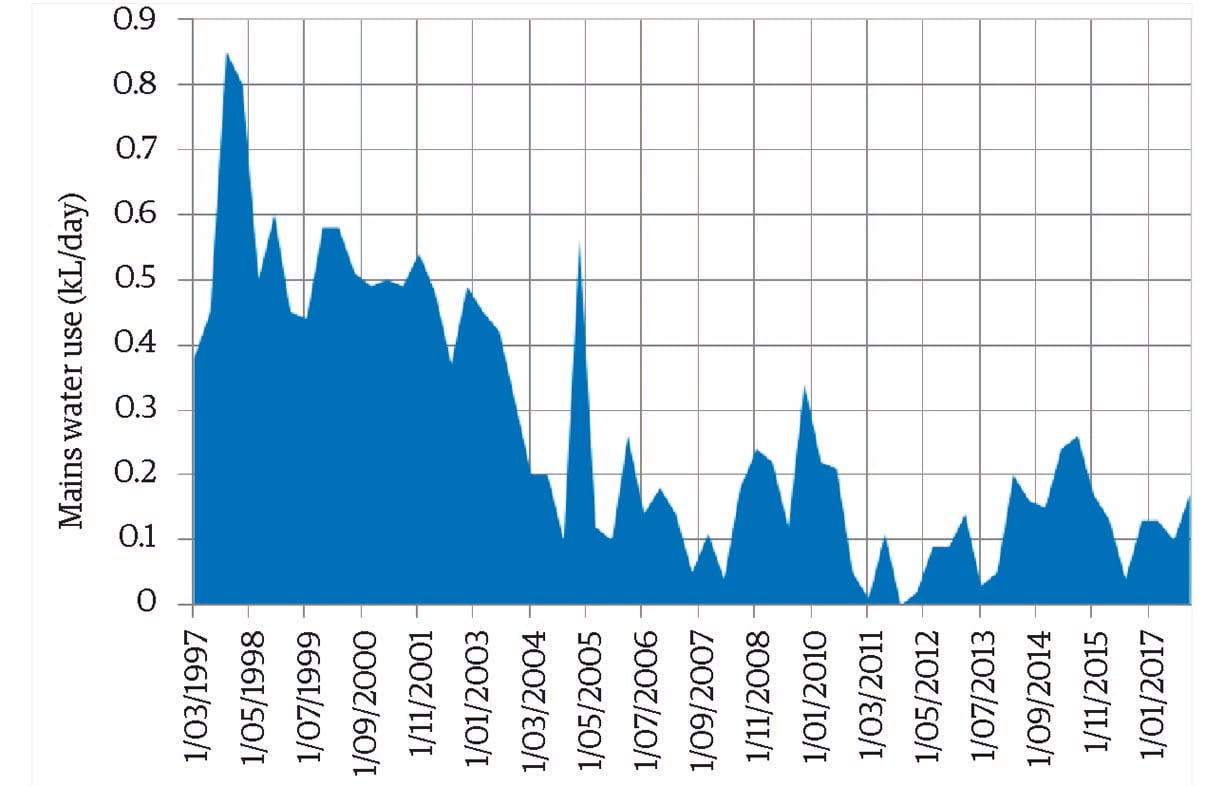
July 2003 to April 2004
We kept a diary of household water use over a period of nine months from July 2003 to April 2004, recording the time of all water uses, down to such things as a toilet flush at 2pm! Combined with the water metering data, we were able to determine our average water usage by type of use. As Figure 3 shows, our water use is dominated by showers, laundry and toilet, accounting for 79% of water use, with the garden the next biggest user.
Figure 4 shows where that water came from—rainwater or mains—and shows significant rainwater supply even though this was a period of low rainfall: average daily rainfall was 2.38 mm/day, 23% below average. We averaged 210 L/day of mains water and 160 L/day of rainwater, a reduction of 60%.
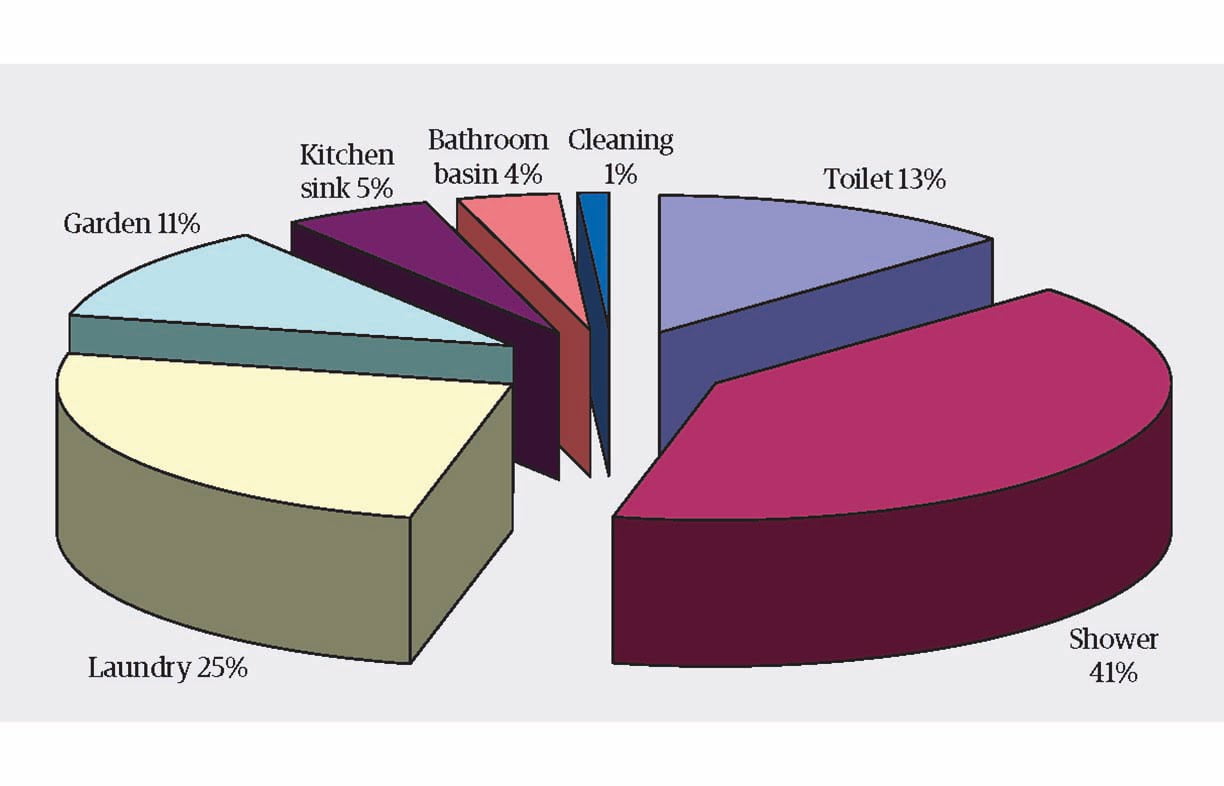
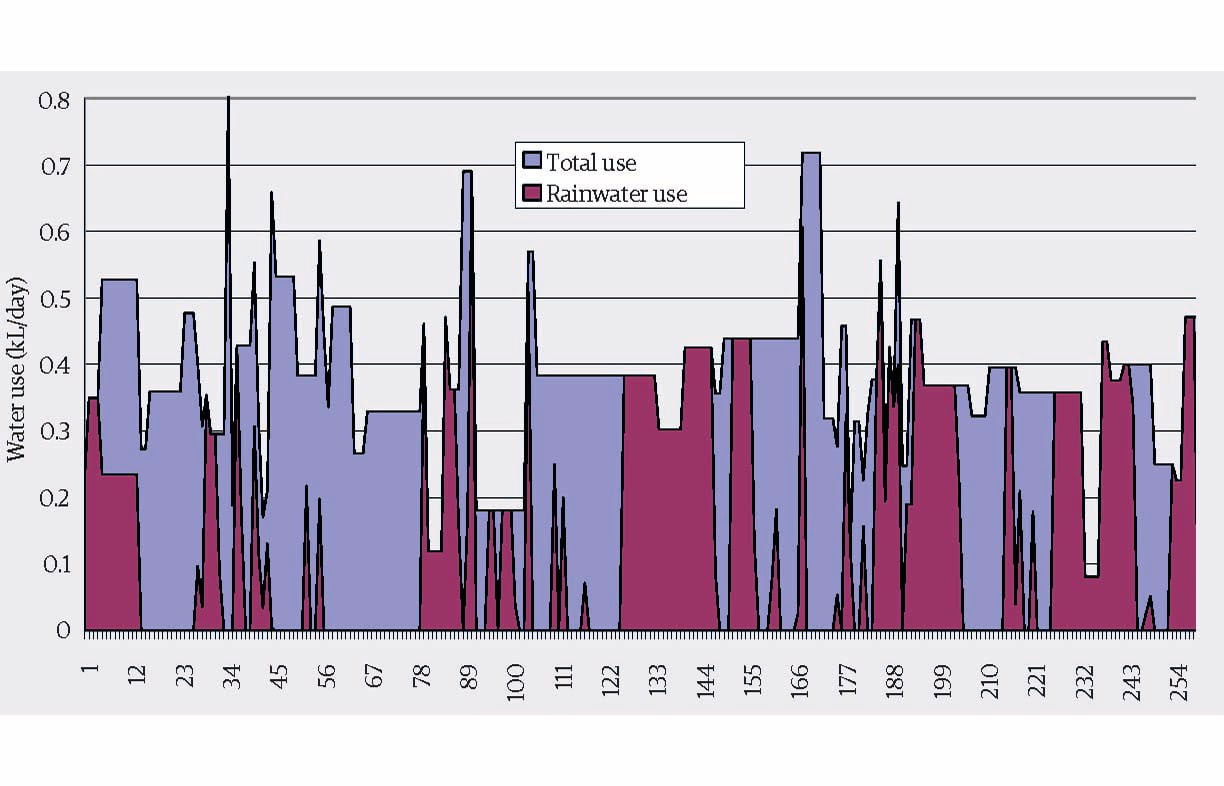
October 2015 to January 2017
From October 2015 to January 2017, after we had replaced our tank and installed the mains water pressure bypass system, we averaged 110 L/day of mains water and 140 L/day of rainwater, a reduction of 79% in mains water use. The lower level of total water use (250 L/day) and therefore higher level of water efficiency was due to fixing the water leaks. Even though this was a time of higher rainfall (average 2.94 mm/day), the lower level of rainwater use was due to the pressure bypass arrangement selecting mains water first for low volume or low flow rate uses.
2017 water use
We continued detailed monitoring from April to August 2017 after shifting to the hydraulic bypass system. During this period we averaged 170 L/day of mains water (67% reduction) and 120 L/day of rainwater supply. Rainwater use was diminished due to lower rainfall during this period, averaging 2.35 mm/day.
Energy use
Our use of grid energy decreased by 8% to 17 kWh/day during the period 2003 to 2012 following the installation of the rainwater harvesting system, even though we’d also installed appliances such as an air conditioner and a clothes dryer. Our monitoring showed that the interaction of lower flow rates from the rainwater pump with household appliances led to a reduction in hot water use and hence a reduction in energy use. This indicates that the house operates as a system rather than the sum of behaviours from individual appliances and fixtures.
Installation of the solar panels (1.5 kW) in 2012 resulted in our average grid energy use reducing to 12 kWh/day. In 2017, the addition of the 2 kW solar array and battery storage reduced our average grid energy use to 4.7 kWh/day. We also optimised our use of solar energy by shifting high energy uses from evenings to daytime when sunshine was available.
Stormwater runoff
Through the use of rainwater tanks to supply both indoor and garden uses, the house has significantly reduced stormwater runoff to the street gutter and thus has helped to reduce urban flooding and adverse impacts on waterway health. Analysis of the monitoring data (for example, water levels in the rainwater tank versus rainfall) show an average reduction in stormwater runoff volumes of 55%. We found that available storage in the rainwater tank and in the vegetable garden beds prior to rain events was most likely to be 2.3 m3 and 12 m3 respectively, so that they generally have storage available to capture rain and reduce runoff. Supplying rainwater for indoor uses means that rainwater storage is drawn down regularly, freeing up storage for the next rain event, with benefits in reduced stormwater runoff.
Conclusions
The sustainable measures reduced our household expenditure by $2126 per year by reducing water ($321) and energy ($1618) bills and earning payments for solar energy ($187) exported to the grid. These results demonstrate that small inner city properties can make a significant sustainable contribution.
1. Coombes PJ, Spinks A, Evans C, Dunstan H, Performance of rainwater tanks at an innner city house in Carrington NSW during drought. WSUD 2004, Adelaide, 2004.
Further reading
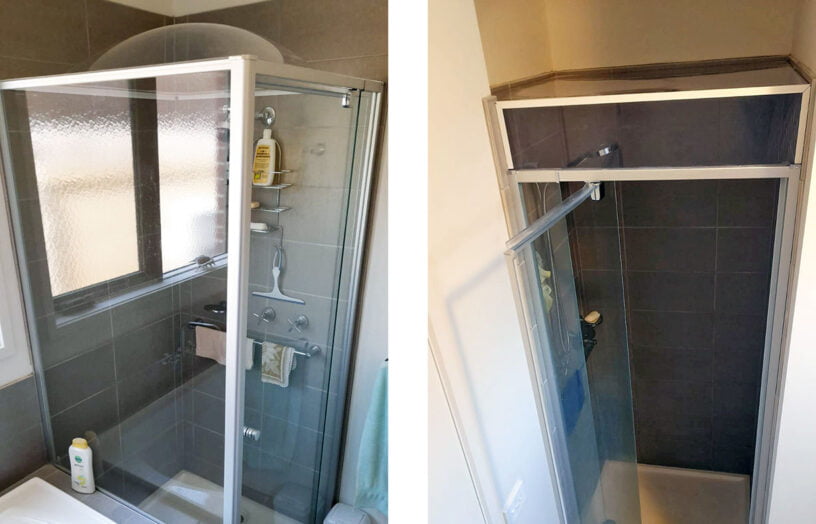 Efficient homes
Efficient homes
Ditching the shower fan
By fitting a lid on the shower, exhaust fans are not needed when showering. John Rogers describes this simple retrofit, using both a commercial product and a great looking DIY version.
Read more Efficient homes
Efficient homes
Building for a changing climate
Are we building homes for the future, or for the past? Rob McLeod investigates how climate change is impacting home energy ratings and the way we build our homes.
Read more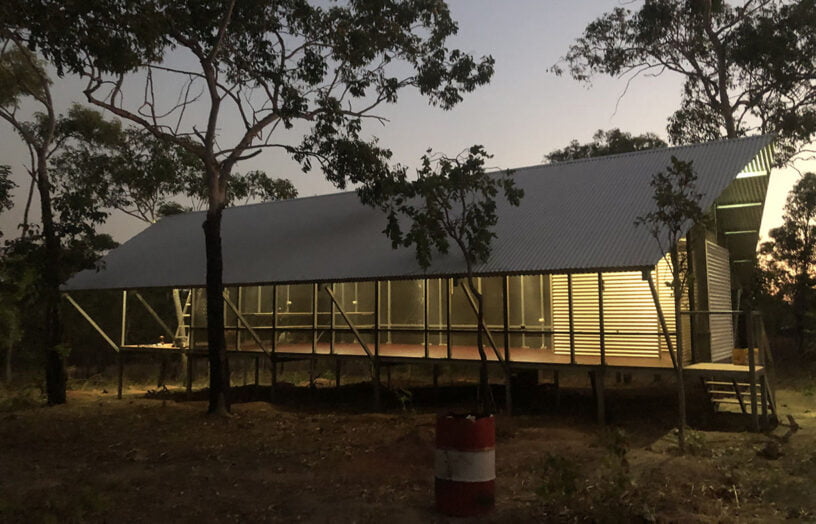 Efficient homes
Efficient homes
Remote communities leading the charge
We learn about four sustainability and renewable energy projects in remote Australia.
Read more

